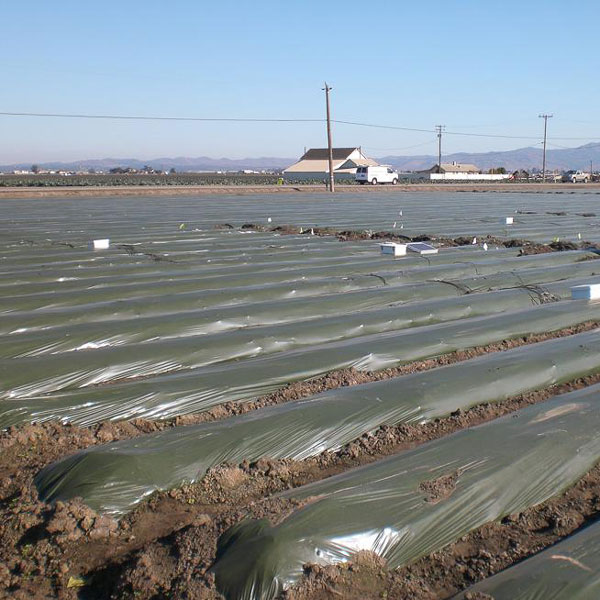Pulling and replanting a walnut orchard presents many challenges. Planning for treatment of orchard soils to ensure a healthy new orchard includes identifying problems ahead of time and choosing appropriate prevention.
Chemical fumigation has been standard practice for replanting orchards, but alternatives are being studied.
Though not currently used in commercial walnut production, there have been some large trials to determine if anaerobic soil disinfestation (ASD) is useful in suppressing soilborne pathogens and pests when replanting walnut orchards.
Trials were conducted at the UC Kearney Agriculture and Research Center.
The practice is being studied as an alternative to using chemical fumigants due to increased restrictions on their use. Methyl bromide has been the fumigant of choice for many years, killing both soil pathogens and pests along with weed seeds.
Anaerobic soil disinfestation is a biologically based integrated management strategy for soilborne diseases that aims for sustainable production without the use of chemical fumigants. ASD has been used in commercial strawberry production and is also being tested in almonds. It is generally done during the hot summer months after the old orchard has been removed.
Dr. Daniel Kluepfel, a United States Department of Agriculture (USDA)/Agricultural Research Service (ARS) scientist at University of California Davis said in walnut replanting, two of the biggest challenges to new tree health are lesion nematode and crown gall. High concentrations of bacterium Agrobacterium tumefaciens, the pathogen that causes crown gall, can cause stunting in young trees which may result in reduced yields. Lesion nematodes feeding on the young tree roots will rob the tree of nutrients resulting in stunted and weak trees.
Kluepfel said the ASD method in a replant situation involves application of a carbon source, irrigation to field capacity and covering the soil with a plastic tarp for a designated time. This process leads to shifts in the soil microbe community, production of volatile organic compounds and the generation of lethal anaerobic conditions.
The efficacy of the process against the targeted pathogen or parasite may be influenced by the type of carbon source used, the sort of tarp applied and the resulting soil temperature reached and maintained.
Fundamentally, we understand how ASD works, and we know it can be done, but at this time the cost of the process is nearly equivalent to the cost of a chemical fumigation, Kluepfel said.
Carbon sources besides rice bran have included composted broiler litter, green manure and cover crops. In addition to the carbon source, the rate of application and resulting soil conditions such as pH and temperature under the plastic tarp may determine effectiveness of ASD.
Using carbon sources that are local also may reduce the cost of ASD while not impacting efficacy. Researchers are exploring many of these options.

Cecilia Parsons
Cecilia Parsons has lived in the Central Valley community of Ducor since 1976, covering agriculture for numerous agricultural publications over the years. She has found and nurtured many wonderful and helpful contacts in the ag community, including the UCCE advisors, allowing for news coverage that focuses on the basics of food production.
She is always on the search for new ag topics that can help growers and processors in the San Joaquin Valley improve their bottom line.
In her free time, Cecilia rides her horse, Holly in ranch versatility shows and raises registered Shetland sheep which she exhibits at county and state fairs during the summer.
















